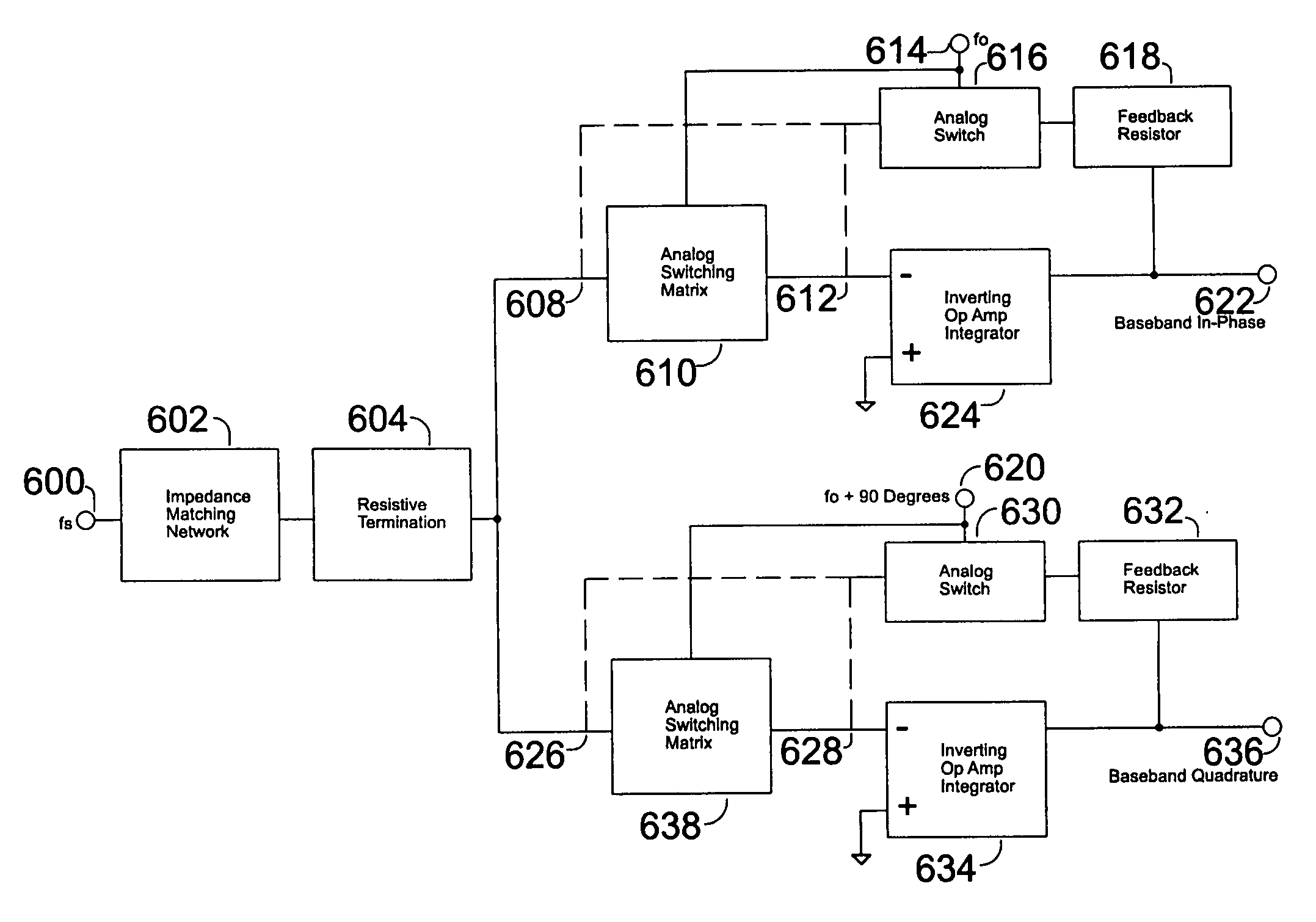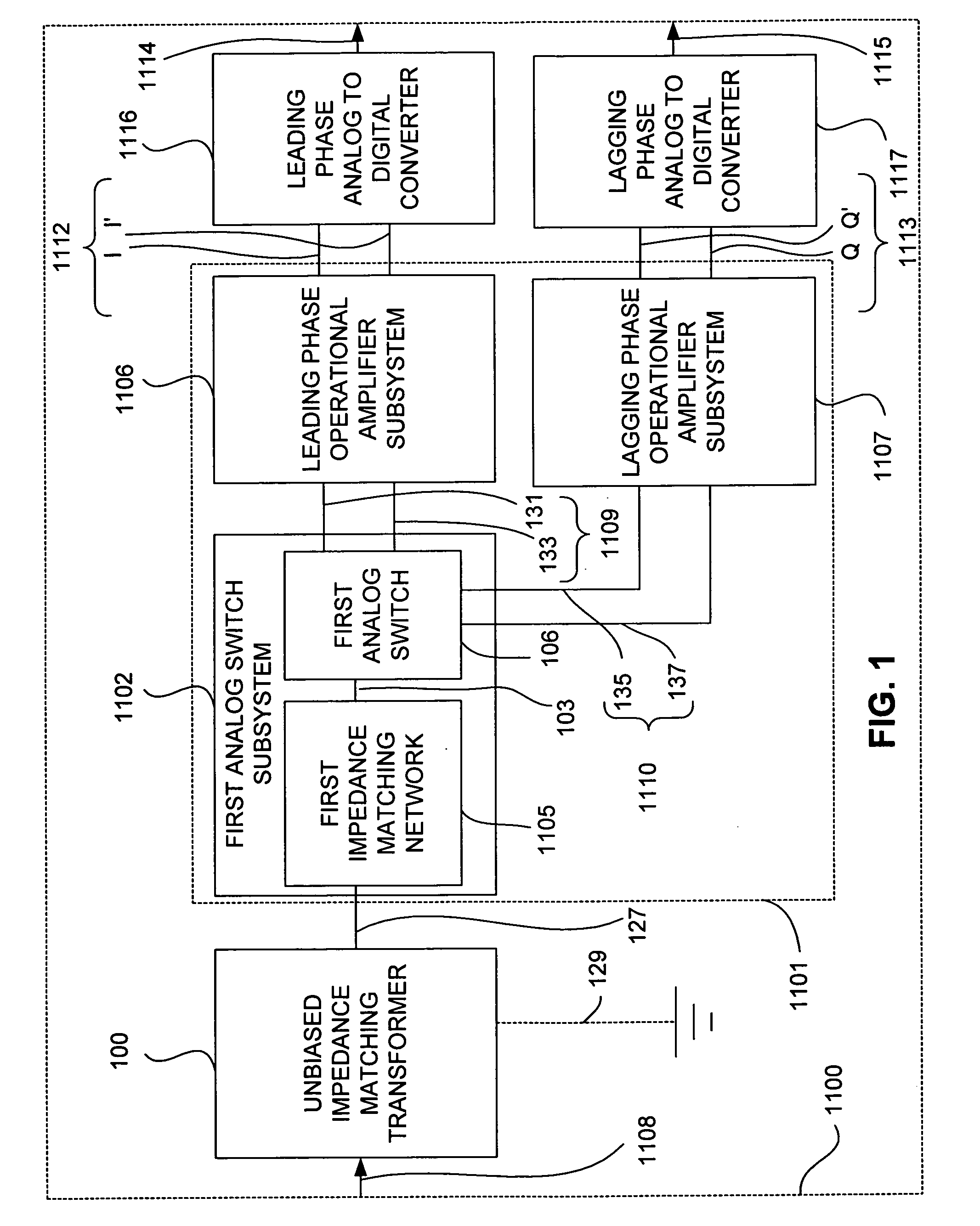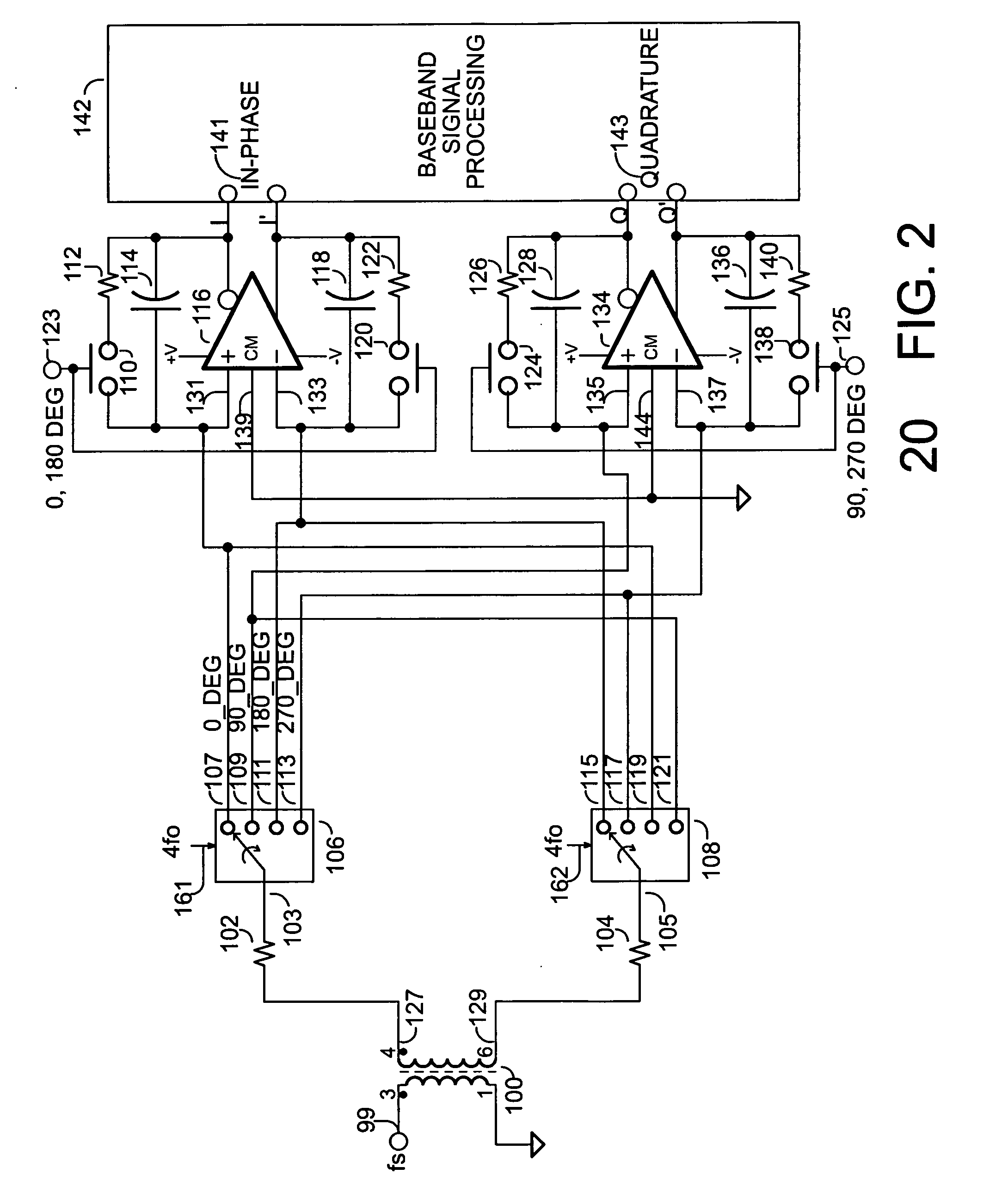Direct conversion receiver
a direct conversion and receiver technology, applied in the field of wireless communication, can solve the problems of limiting the overall performance of the receiver based on such technology, unable to provide the opposite sideband (“image”) suppression, and unable to provide the rejection of analog phasing networks
- Summary
- Abstract
- Description
- Claims
- Application Information
AI Technical Summary
Problems solved by technology
Method used
Image
Examples
Embodiment Construction
[0028]Apparatus is provided for a direct conversion receiver. In accordance with at least one embodiment, the apparatus providing the direct conversion receiver comprises a phase sampling detector (e.g., a Quadrature Sampling Detector), which comprises a leading phase operational amplifier subsystem and a leading phase analog switch, as well as a lagging phase operational amplifier subsystem and a lagging phase analog switch. In accordance with at least one embodiment, a leading phase analog switch output terminal is coupled to a first leading phase operational amplifier input of the leading phase operational amplifier subsystem, and the leading phase analog switch output terminal is maintained continually at a ground potential.
[0029]In accordance with at least one embodiment, a lagging phase analog switch output terminal is coupled to a first lagging phase operational amplifier input of the lagging phase operational amplifier subsystem, and the lagging phase analog switch output te...
PUM
 Login to View More
Login to View More Abstract
Description
Claims
Application Information
 Login to View More
Login to View More - R&D
- Intellectual Property
- Life Sciences
- Materials
- Tech Scout
- Unparalleled Data Quality
- Higher Quality Content
- 60% Fewer Hallucinations
Browse by: Latest US Patents, China's latest patents, Technical Efficacy Thesaurus, Application Domain, Technology Topic, Popular Technical Reports.
© 2025 PatSnap. All rights reserved.Legal|Privacy policy|Modern Slavery Act Transparency Statement|Sitemap|About US| Contact US: help@patsnap.com



